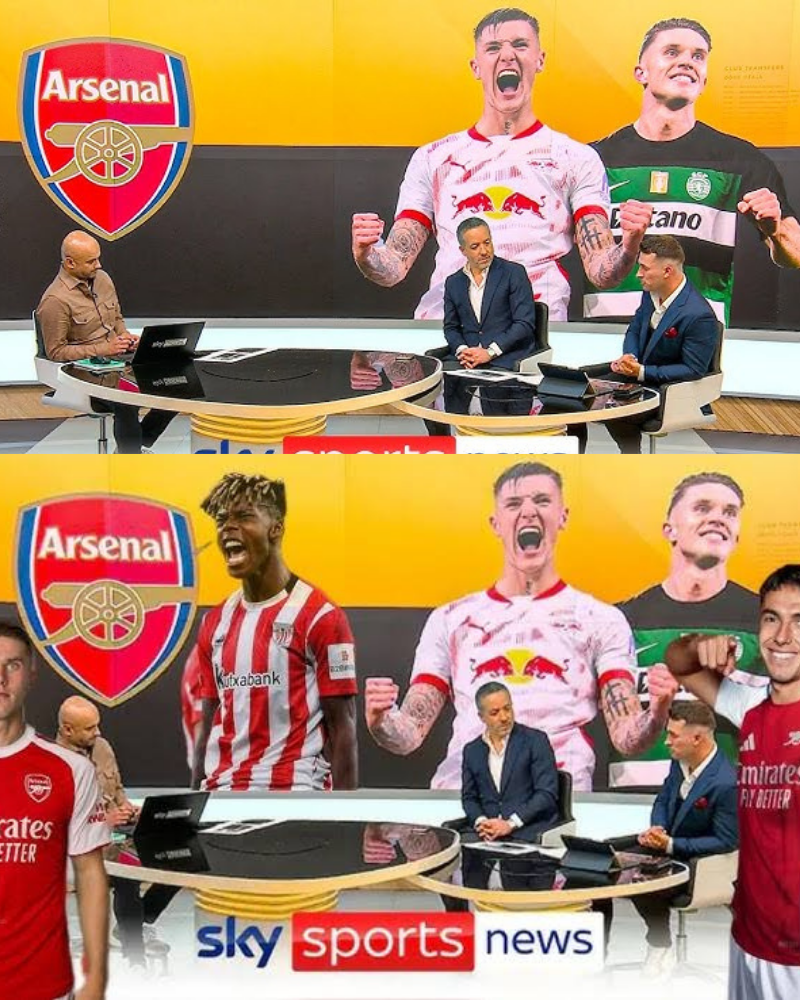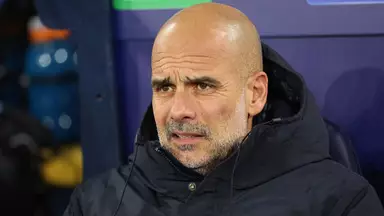Arsenal Striker Hunt: Will it be Gyökeres or Šeško? | The Transfer Show

Arsenal’s striker conundrum has dominated transfer headlines throughout 2025, with Mikel Arteta’s side desperately seeking to address their most glaring weakness. After years of relying on makeshift solutions and watching golden opportunities slip away due to a lack of clinical finishing, the Gunners find themselves at a crossroads. Two names have emerged as the leading candidates to solve Arsenal’s striker crisis: Viktor Gyökeres from Sporting CP and Benjamin Šeško from RB Leipzig. Both represent different philosophies, different stages of development, and different financial commitments that could shape Arsenal’s trajectory for years to come.
Arsenal’s lack of a proven goalscorer has been their Achilles’ heel in recent seasons. Despite building one of the most exciting young squads in European football under Arteta, the absence of a natural finisher has cost them dearly in title races and crucial knockout competitions. Kai Havertz has shown promise in the false nine role but lacks the predatory instincts of elite strikers, while Gabriel Jesus, though technically gifted, has struggled with consistency and injury problems.
The situation became even more pressing during the 2024-25 season when serious injuries to both Havertz and Jesus left Arsenal scrambling for solutions. Eddie Nketiah’s departure to Crystal Palace further depleted their options, making it abundantly clear that signing a world-class striker wasn’t just a luxury—it was an absolute necessity.
Arteta has been vocal about Arsenal’s summer ambitions, describing it as potentially transformative for the club. The Spanish manager knows that the difference between competing for titles and actually winning them often comes down to having that reliable goalscorer who can deliver in crucial moments.
At 27 years old, Viktor Gyökeres represents the immediate solution to Arsenal’s striker woes. The Swedish international has been nothing short of sensational since joining Sporting CP, establishing himself as one of Europe’s most feared marksmen. His statistics speak for themselves—the forward has been a goal machine, combining physical presence with clinical finishing that has caught the attention of Europe’s elite clubs.
Gyökeres’ journey to prominence has been fascinating. After struggling to make his mark at Brighton & Hove Albion in the Premier League, the Swede found his rhythm in Portugal, where his game flourished under different tactical systems and playing styles. His transformation from a promising but inconsistent winger to a lethal center-forward showcases his adaptability and determination to succeed at the highest level.
Standing at 187 cm with a powerful build, Gyökeres offers the physical presence that Arsenal have often lacked in attack. His ability to hold up play, bring teammates into the game, and finish with both feet makes him an attractive proposition for Arteta’s system. The Swede’s movement in the box is particularly impressive, often finding space in crowded penalty areas and converting half-chances that lesser strikers might squander.
What makes Gyökeres particularly appealing is his proven track record in European competition. His performances in the Champions League have demonstrated that he can perform against elite opposition, a crucial factor for Arsenal as they aim to compete on multiple fronts. His experience and maturity would provide immediate impact, something that could be decisive in Arsenal’s pursuit of major trophies.
From a tactical perspective, Gyökeres would fit seamlessly into Arsenal’s current setup. His ability to drop deep and link play would complement the likes of Martin Ødegaard and Bukayo Saka, while his pace and directness would add a new dimension to Arsenal’s attack. The Swedish striker’s work rate and pressing ability align perfectly with Arteta’s high-intensity style of play.
However, Gyökeres’ route to Arsenal appears increasingly complicated. Recent reports suggest that Manchester United have made significant strides in their pursuit of the striker, with the player reportedly giving his approval to a potential move to Old Trafford. United’s ability to offer Champions League football and their historical pull could prove decisive factors in any transfer battle.
On the other side of Arsenal’s striker dilemma stands Benjamin Šeško, the 22-year-old Slovenian who represents a more long-term investment. The RB Leipzig forward embodies the modern striker—tall, technical, and devastatingly effective in front of goal. At 6’4″, Šeško combines aerial dominance with surprising mobility and technical ability that belies his imposing frame.
Šeško’s rise through the ranks has been meteoric. From his early days at Salzburg to his current status as one of Europe’s most sought-after strikers, the Slovenian has consistently demonstrated his ability to score goals at every level. His international performances have been particularly impressive, often single-handedly carrying Slovenia’s attacking threat and showcasing his ability to perform on the biggest stages.
What sets Šeško apart is his incredible potential for improvement. At just 22, he’s already displaying the attributes of a world-class striker, but his best years are undoubtedly ahead of him. For Arsenal, signing Šeško would represent an investment in the future—a player who could lead their attack for the next decade while continuing to develop and improve.
The Slovenian’s technical abilities are particularly impressive for a player of his size. His first touch is excellent, his movement in the box is intelligent, and his finishing with both feet is clinical. These attributes make him perfectly suited to the Premier League’s demands, where physical presence must be combined with technical excellence to succeed consistently.
From Arsenal’s perspective, Šeško represents the ideal profile for their long-term planning. The club has shown a clear preference for signing young, talented players who can develop within their system, and Šeško fits this philosophy perfectly. His age means he would be entering his prime years during what Arsenal hope will be their most successful period under Arteta.
Reports suggest that Arsenal have made formal approaches to Leipzig for Šeško’s services, with the German club reportedly demanding a fee in the region of £70-93 million. This substantial investment reflects both Leipzig’s reluctance to sell and their recognition of Šeško’s immense value. The fact that Arsenal are willing to meet such demands demonstrates their commitment to solving their striker problem definitively.
However, the Šeško transfer isn’t without complications. Recent reports suggest that Arsenal may be growing frustrated with the pace of negotiations, with Leipzig’s demands and the player’s wage expectations potentially proving problematic. There are also suggestions that other clubs are beginning to circle, potentially driving up the price even further.
The financial implications of both potential transfers are significant and could influence Arsenal’s decision-making process. Gyökeres, being the older of the two players, would likely command a lower transfer fee but higher wages, reflecting his immediate impact and shorter contract duration. His market value is estimated at around €77 million, though Sporting CP’s asking price could be considerably higher given his importance to their team.
Šeško, conversely, represents a larger initial investment but potentially better long-term value. His age means Arsenal could recoup their investment if they ever decided to sell, while his potential for appreciation makes him an attractive financial proposition. However, the reported £93 million price tag would represent one of Arsenal’s largest ever investments in a single player, placing enormous pressure on the young striker to deliver immediately.
Arsenal’s financial situation is relatively healthy, but they must balance their striker pursuit with other squad needs. The club requires depth in multiple positions, and committing such a large portion of their budget to one player could limit their ability to strengthen elsewhere. This consideration may favor Gyökeres if Sporting prove more reasonable in their valuation.
The wage structures at both clubs also play a crucial role. Leipzig’s ability to offer Champions League football could make them more attractive to potential suitors, while Sporting’s domestic focus might make them more willing to negotiate reasonable terms for Gyökeres’ departure.
Arteta’s tactical system demands specific attributes from his striker, and both Gyökeres and Šeško offer different solutions to Arsenal’s needs. The Spanish manager typically employs a fluid front three, with the central striker expected to drift wide, drop deep, and create space for attacking midfielders to exploit.
Gyökeres’ experience in similar systems at Sporting makes him an immediately viable option. His understanding of positional play and ability to link with midfielders would require minimal adaptation time. The Swede’s pressing intensity and defensive work rate align perfectly with Arteta’s demands, while his clinical finishing would address Arsenal’s most pressing need.
Šeško offers different tactical possibilities. His height and aerial ability would give Arsenal a new dimension in attack, particularly from set pieces where they’ve sometimes struggled to convert dominance into goals. His pace and power would provide a more direct attacking threat, potentially allowing Arsenal to vary their approach depending on the opposition.
The young Slovenian’s versatility is another attractive attribute. He’s comfortable playing across the front line and has even operated as an attacking midfielder when required. This flexibility would give Arteta additional tactical options and could prove valuable during Arsenal’s congested fixture schedule.
Both players possess the technical ability to thrive in the Premier League’s demanding environment. However, Gyökeres’ experience in English football during his Brighton days, despite limited success, might give him a slight advantage in terms of league adaptation.
The psychological impact of either signing cannot be understated. Arsenal’s squad is young and talented but lacks the winning mentality that comes with experienced, proven goalscorers. Gyökeres’ maturity and leadership qualities could provide the psychological boost that transforms Arsenal from title challengers to title winners.
His presence would also relieve pressure on younger players like Gabriel Martinelli and Bukayo Saka, who have sometimes shouldered too much attacking responsibility. Having a reliable finisher would allow Arsenal’s creative players to focus on their strengths while knowing that chances will be converted consistently.
Šeško, while younger, has already demonstrated remarkable composure in high-pressure situations. His performances for Slovenia in major tournaments and his goal-scoring record in the Champions League suggest that he possesses the mental fortitude required to succeed at Arsenal. His youth could actually be an advantage, as he would grow alongside Arsenal’s current core and potentially develop an even stronger connection with his teammates.
The signing of either player would send a strong message to the rest of the Premier League about Arsenal’s ambitions. After years of being perceived as a stepping stone club, landing a marquee striker would demonstrate their intent to compete with Manchester City and Liverpool for major honors.
Arsenal’s pursuit of both strikers is complicated by interest from other major clubs. Manchester United’s apparent progress in negotiations with Gyökeres represents a significant threat to Arsenal’s plans. United’s ability to offer immediate Champions League football and their historical appeal to Scandinavian players could prove decisive factors.
The rivalry between Arsenal and United adds extra spice to any potential battle for Gyökeres’ signature. Both clubs desperately need striker reinforcements, and missing out on their primary target could have significant consequences for their respective seasons. United’s financial power and their recent upturn in form under their current management make them formidable competitors in the transfer market.
Šeško’s situation is equally complex, with several European giants reportedly monitoring his situation. Bayern Munich, Paris Saint-Germain, and even Real Madrid have been linked with the young striker, though Arsenal’s early move and willingness to meet Leipzig’s demands may give them an advantage.
The competition for both players highlights the premium placed on quality strikers in the current market. With goals becoming increasingly difficult to come by in modern football, clubs are willing to pay premium prices for proven goalscorers or exceptional talents.
Arsenal’s choice between Gyökeres and Šeško ultimately reflects two different philosophical approaches to squad building. Gyökeres represents the “win now” mentality—an experienced, proven goalscorer who could immediately transform Arsenal into genuine title contenders. His signing would signal Arsenal’s intent to capitalize on their current momentum and challenge for major honors in the immediate future.
Šeško embodies the long-term vision that has characterized Arsenal’s recent transfer strategy. His potential for growth and development aligns with the club’s broader project, offering the possibility of a decade-long partnership that could define Arsenal’s most successful era in recent memory.
Recent reports suggest that Arsenal are prioritizing Šeško, viewing him as their preferred option despite the challenges involved in completing the transfer. This preference reflects Arteta’s confidence in his ability to develop young talent and his belief that Šeško represents better long-term value despite the higher initial cost.
However, the complexity of the Šeško negotiations may force Arsenal to pivot toward Gyökeres if progress stalls. The Swedish striker’s apparent openness to joining Manchester United adds urgency to Arsenal’s decision-making process, as they risk losing both of their primary targets if they delay too long.
The coming weeks will be crucial in determining Arsenal’s striker situation. With pre-season approaching and the new campaign on the horizon, Arteta needs clarity on his attacking options to properly prepare his team for the challenges ahead.
Whichever direction Arsenal chooses, the decision will likely define their trajectory for years to come. Both Gyökeres and Šeško offer compelling arguments for their candidacy, but only one can wear the Arsenal shirt come August. The transfer saga continues, with Arsenal fans eagerly awaiting the resolution of their club’s most pressing need.
In the high-stakes world of modern football transfers, Arsenal’s striker hunt represents more than just squad strengthening—it’s a statement of intent, a declaration of ambition, and potentially the missing piece in their championship puzzle. Whether that piece is named Viktor Gyökeres or Benjamin Šeško remains to be seen, but Arsenal’s future may well depend on making the right choice.














